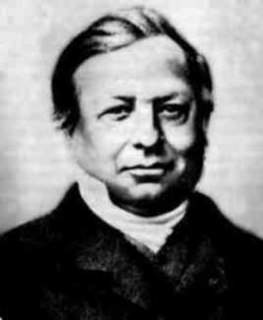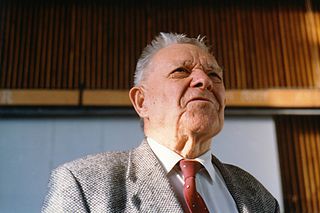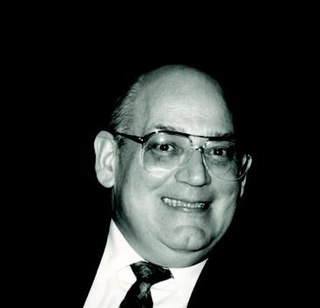
Edward Barry Saff (born 2 January 1944 in New York City) [1] is an American mathematician, specializing in complex analysis, approximation theory, numerical analysis, and potential theory.

Edward Barry Saff (born 2 January 1944 in New York City) [1] is an American mathematician, specializing in complex analysis, approximation theory, numerical analysis, and potential theory.
Saff received in 1964 his bachelor's degree from the Georgia Institute of Technology and in 1968 his PhD from the University of Maryland, College Park under Joseph L. Walsh with thesis Interpolation and Functions of Class H (k, a, 2). [2] [3] As a postdoc he was a Fulbright Fellow at Imperial College London from 1968 to 1969. At the University of South Florida he was from 1969 to 1971 an assistant professor, from 1971 to 1976 an associate professor, from 1976 to 1986 a full professor, and from 1986 to 2001 a distinguished research professor. At Vanderbilt University he is, since 2001, a professor and director of the Center for Constructive Approximation and was from 2004 to 2007 the Executive Dean of the College of Arts and Sciences.
His research deals with approximation of complex functions by polynomials and rational functions, approximate solutions of differential equations, Padé approximants, geometry of polynomials, special functions, Hardy spaces, conformal mappings (including numerical analysis). and potential theory (minima of energy under boundary value constraints or external fields). He is the author or coauthor of over 240 research articles, the coauthor of 9 books, and the coeditor of 11 volumes. He was the coeditor, with Theodore J. Rivlin, of a volume of Joseph L. Walsh's Selected Works published in 2000. [4] Since 2007 he is an ISI Highly Cited Researcher.
For the academic year 1978–1979 Saff was a Guggenheim Fellow at the University of Oxford. In 2012 he was elected a Fellow of the American Mathematical Society. He was elected in 2013 a Foreign Member of the Bulgarian Academy of Sciences and made in 1987 an Honorary Professor of the Zhejiang Normal University in China.

Geometry of numbers is the part of number theory which uses geometry for the study of algebraic numbers. Typically, a ring of algebraic integers is viewed as a lattice in and the study of these lattices provides fundamental information on algebraic numbers. The geometry of numbers was initiated by Hermann Minkowski (1910).

In mathematics, p-adic analysis is a branch of number theory that deals with the mathematical analysis of functions of p-adic numbers.

In mathematics, Roth's theorem is a fundamental result in diophantine approximation to algebraic numbers. It is of a qualitative type, stating that algebraic numbers cannot have many rational number approximations that are 'very good'. Over half a century, the meaning of very good here was refined by a number of mathematicians, starting with Joseph Liouville in 1844 and continuing with work of Axel Thue (1909), Carl Ludwig Siegel (1921), Freeman Dyson (1947), and Klaus Roth (1955).

Marcel Riesz was a Hungarian mathematician, known for work on summation methods, potential theory, and other parts of analysis, as well as number theory, partial differential equations, and Clifford algebras. He spent most of his career in Lund (Sweden).

In mathematics a Padé approximant is the "best" approximation of a function by a rational function of given order – under this technique, the approximant's power series agrees with the power series of the function it is approximating. The technique was developed around 1890 by Henri Padé, but goes back to Georg Frobenius, who introduced the idea and investigated the features of rational approximations of power series.

Sergey Mikhailovich Nikolsky was a Russian mathematician. He was born in Talitsa, which was at that time located in Kamyshlovsky Uyezd, Perm Governorate, Russian Empire. He had been an Academician since November 28, 1972. He also had won many scientific awards. At the age of 92 he was still actively giving lectures in Moscow Institute of Physics and Technology. In 2005, he was only giving talks at scientific conferences, but was still working in MIPT, at the age of 100. He died in Moscow in November 2012 at the age of 107.
In mathematics, specifically in transcendental number theory and Diophantine approximation, Siegel's lemma refers to bounds on the solutions of linear equations obtained by the construction of auxiliary functions. The existence of these polynomials was proven by Axel Thue; Thue's proof used Dirichlet's box principle. Carl Ludwig Siegel published his lemma in 1929. It is a pure existence theorem for a system of linear equations.

Stochastic partial differential equations (SPDEs) generalize partial differential equations via random force terms and coefficients, in the same way ordinary stochastic differential equations generalize ordinary differential equations.
Philippe G. Ciarlet is a French mathematician, known particularly for his work on mathematical analysis of the finite element method. He has contributed also to elasticity, to the theory of plates and shells and differential geometry.
Vilmos Totik is a Hungarian mathematician, working in classical analysis, harmonic analysis, orthogonal polynomials, approximation theory, potential theory. He is a professor of the University of Szeged. Since 1989 he is also a part-time professor at the University of South Florida (Tampa).

Richard Steven Varga is an American mathematician who specializes in numerical analysis and linear algebra. He is currently an Emeritus University Professor of Mathematical Sciences at Kent State University and an adjunct Professor at Case Western Reserve University. Varga is known for his contributions to many areas of mathematics, including matrix analysis, complex analysis, approximation theory, and scientific computation. He is the author of the classic textbook Matrix Iterative Analysis. Varga has been the Editor-in-Chief of the journal Electronic Transactions on Numerical Analysis (ETNA).
Peter Wynn (1931—2017) was an English mathematician. His main achievements concern approximation theory – in particular the theory of Padé approximants – and its application in numerical methods for improving the rate of convergence of sequences of real numbers.
Robert Creighton Buck, usually cited as R. Creighton Buck, was an American mathematician who, with Ralph Boas, introduced Boas–Buck polynomials. He taught at University of Wisconsin–Madison for 40 years. In addition, he was a writer.
Irena Lasiecka is a Polish-American mathematician, a Distinguished University Professor of mathematics and chair of the mathematics department at the University of Memphis. She is also co-editor-in-chief of two academic journals, Applied Mathematics & Optimization and Evolution Equations & Control Theory.
Lawrence Allen Zalcman is professor emeritus of Mathematics at Bar-Ilan University. His research concerns Complex analysis and potential theory, and their relations with approximation theory, harmonic analysis, integral geometry and partial differential equations. On top of his scientific achievements, Zalcman received numerous awards for mathematical exposition, including the Chauvenet Prize in 1976, the Lester R. Ford Award in 1975 and 1981, and the Paul R. Halmos – Lester R. Ford Award in 2017.
Andrey Aleksandrovich Gonchar, was a Soviet and Russian mathematician, specializing in analysis.
The Walsh–Lebesgue theorem is a famous result from harmonic analysis proved by the American mathematician Joseph L. Walsh in 1929, using results proved by Lebesgue in 1907. The theorem states the following:
Theodore Joseph Rivlin was an American mathematician, specializing in approximation theory. He is known for his 1969 book An Introduction to the Approximation of Functions, which became a standard text.
Charles Anthony Micchelli is an American mathematician, with an international reputation in numerical analysis, approximation theory, and machine learning.